Bruises are temporary, but the lessons learned on the mat last a lifetime.
Unknown
The Science Behind Bruising
Have you ever wondered why a bruise changes colour? That’s it’s healing process. It goes something like this:
- Stage 1: Red. The bruise is fresh. The blood appears red because it’s still carrying oxygen.
- Stage 2: Blue or Dark Purple. A few hours in, oxygen is no longer supplying the blood cells. Without the oxygen, the blood turns a dark blue or purple.
- Stage 3: Green. A few days in, the body is at work breaking down and reabsorbing the blood. A chemical called biliverdin is produced at this stage, which is, you guessed it – green!
- Stage 4: Yellow or Brown. Bilirubin is the final chemical produced during the bruise’s colourful journey. For the final stage, your bruise would be yellow or brown.
Our bodies are, indeed, outstandingly sophisticated machines.
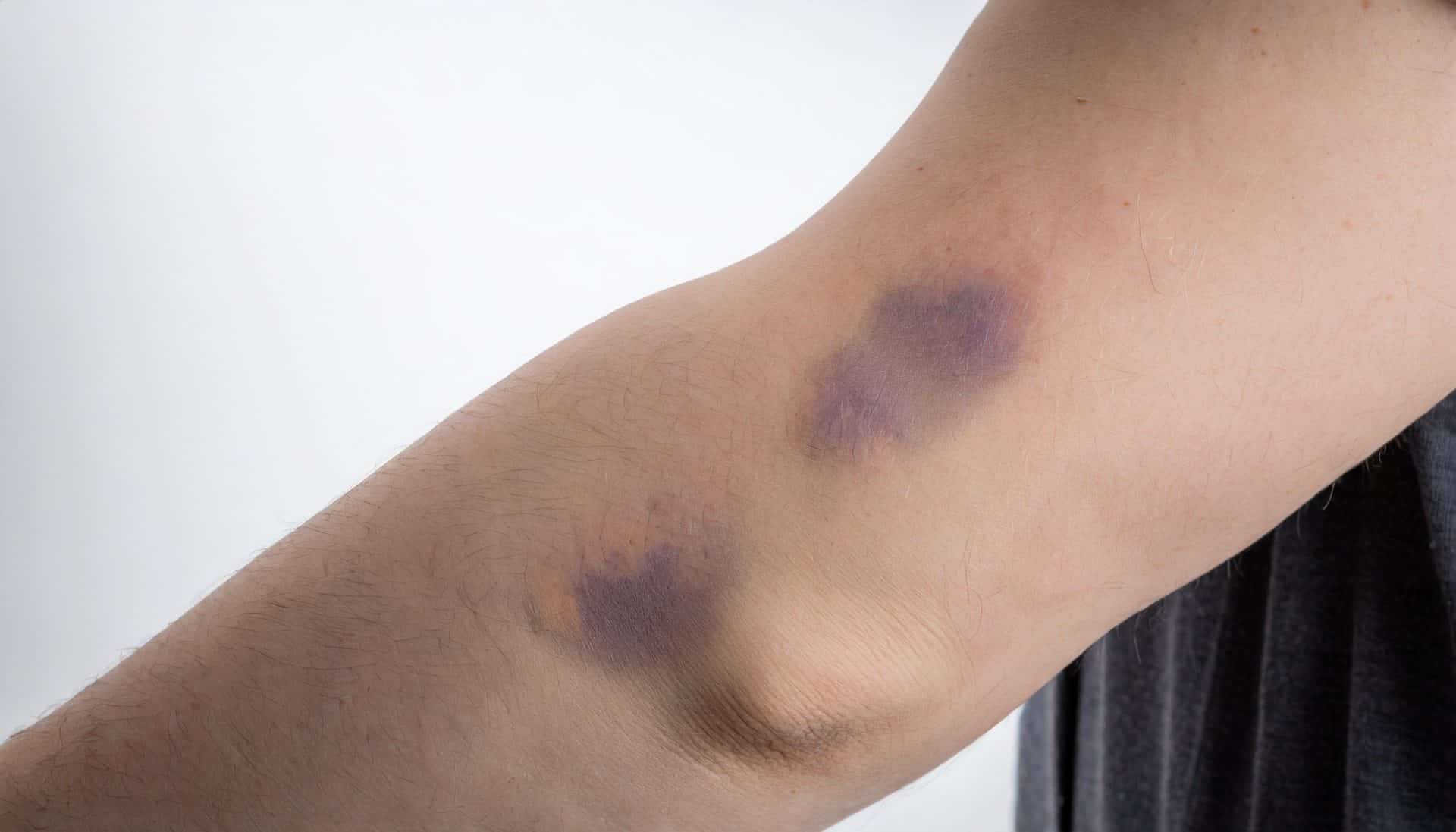
The Relationship Between Bruising and Combat Sports
But why is bruising so common in combat sports like BJJ? Here’s the deal—combat sports, by their very nature, involve a lot of body contact, which increases the likelihood of bruising. When you’re rolling on the BJJ mat, it’s essentially a battlefield where blood vessels are on the front line. One wrong move, one tight grip, or one heavy tumble, and bam – you’re bruised.
Also, let’s not forget that every athlete’s body responds differently. Some of us might bruise easily, while others may walk away from a sparring session with barely a scratch. It’s not necessarily a sign of weakness or a deficiency – it’s how your body is wired.
If we have had a session that involves a lot of gripping – I know there will be minor, fingertip-sized bruises around my triceps. Yes, you want to avoid pinching skin, but I also consider it quite normal to have some marks left if someone is trying to hold onto your arms while manipulating your weight around you.
Diet and Its Impact on Bruising
Have you ever wondered if your food impacts how easily you bruise or how quickly those unsightly blue and purple patches heal? Well, let me tell you—it does. Providing our bodies with the necessary nutrients can dramatically speed up recovery from bruising, while certain other foods can make us more susceptible to them.
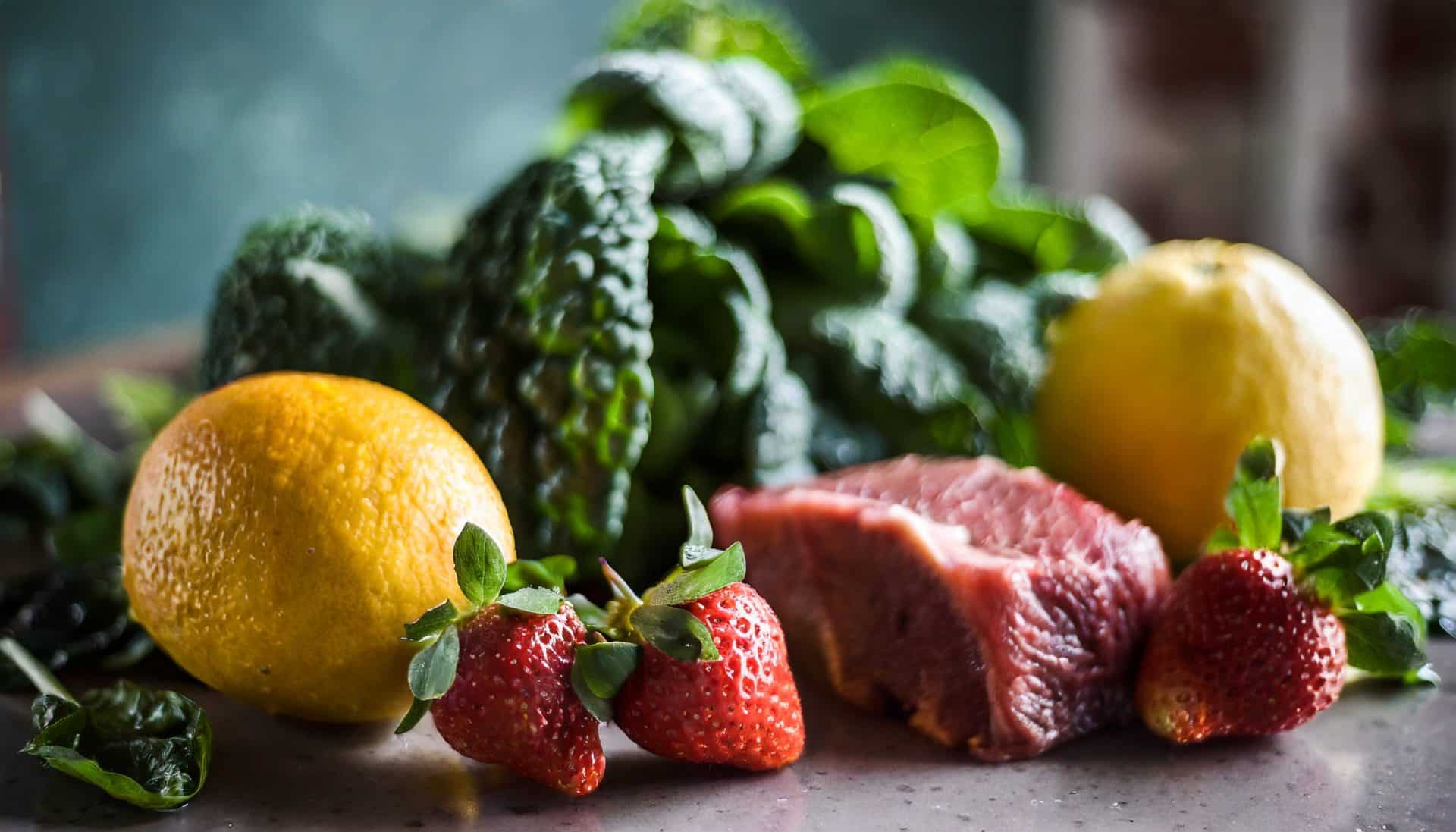
The Nutrients Your Body Needs
First, let’s highlight the good guys—those essential dietary components that can do wonders for bruise recovery. These include Vitamins C, K, and B-12, all of which play roles in the health of our blood vessels and clotting. Here’s the lowdown:
Vitamin C is like a personal bodyguard for your blood vessels, helping strengthen the walls and the cells inside. Citrus fruits, strawberries, and spinach are great C-sources, but capsicins? They’re bursting with the stuff!
Ever heard of Vitamin K? No? Well, let’s get acquainted. Vitamin K aids in clotting—basically, it’s your body’s on-hand medic, rushing to the site of a bruise to begin patching things up. Kale and spinach are Vitamin K powerhouses, but if you fancy something sweeter, prunes are a go-to!
Now, Vitamin B12—this chap is all about the formation of red blood cells. It is found in foods like shellfish, dairy, and my all-time love, beef! B12 not only helps produce more of these little warriors but also keeps them healthy to speed up recovery times.
These days, I get a lot of leafy greens, fresh fruits and red meat into the system – Vitamin K might be something I try out with implementation – but – at the same time, I know the bruises are only around for a day or two before disappearing – so I am comfortable the body is dealing with them quickly enough.
Shaking Hands with the Bad Guys: What to Avoid
As with every story, there are some villains in the mix. In combat sports, these come in the form of substances that can worsen or prolong healing time.
The first suspect? Alcohol. Yup, your post-match pint could be slowing down that bruise recovery. Alcohol dilates the blood vessels, increasing bruising and potentially making the discolouration more apparent! So, you might consider swapping that pint for a glass of water or a fruit smoothie after your match.
Next on our list is salicylic acid. Ever noticed how you bruise more easily when you’re taking aspirin for that nagging headache? That’s because aspirin has salicylic acid, which interferes with clotting processes. Don’t panic—I’m not telling you to abandon your headache reliever completely. Just be aware that regular use can make you more prone to bruising.
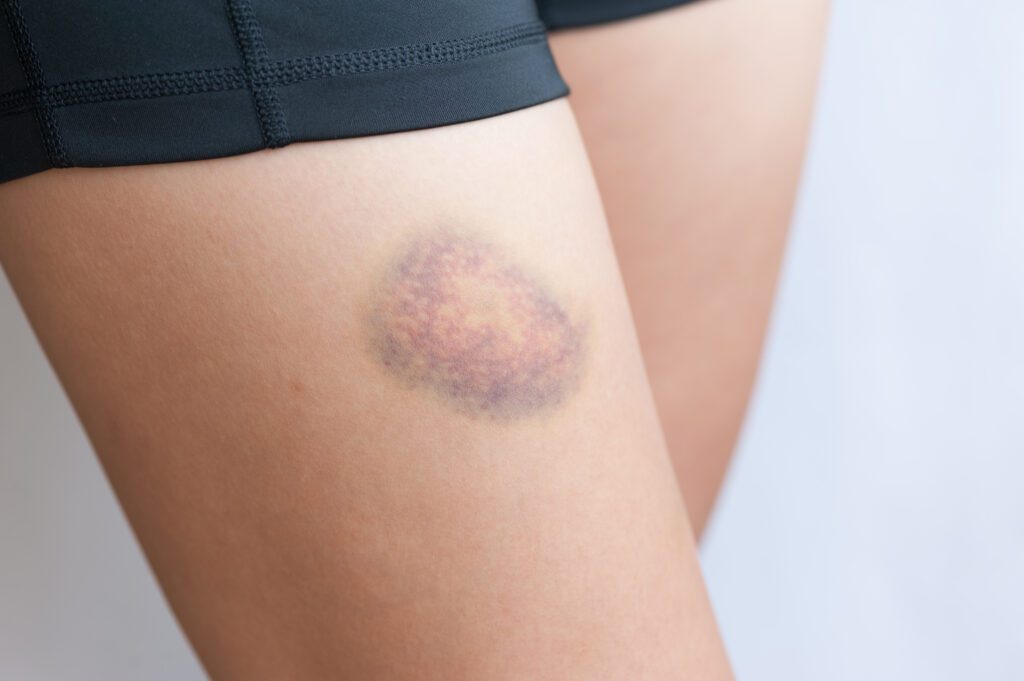
The Effects of Age on Bruising
If you’ve been part of the Brazilian Jiu Jitsu world for a while, you’ve probably noticed that as you age – your bruises start keeping up with the times as well. They seem to appear more frequently and stick around for longer. Don’t worry; you’re not imagining things. It’s not your mind playing tricks on you because you just hit the big 4-0 – there is a scientific basis to this phenomenon.
Why the Elderly Bruise More
So why do we old boys seem to bruise more than you whippersnappers? As people age, their skin becomes thinner, losing some protective fatty layers that cushion the blood vessels against injury. It’s as simple as that. As you age, your body’s cushy protective layer says its goodbyes, leaving you more prone to bruises. Besides, the blood vessels themselves become more fragile and are, hence, more likely to rupture.
Slow Healing with Age
But it’s not just the frequency of bruises you need to worry about—why do our bruises seem to linger longer as we age? That is due to the body’s repair mechanisms slowing down with age. Think of it as a once enthusiastic worker who’s now nearing retirement. It does the work – yes, eventually – but with less pep. This slower healing process means that your bruises take their sweet time to disappear, leaving you with longer memories of your fantastic falls and throws in the Brazilian Jiu Jitsu arena. Just look at a kid to see how much age affects healing rates.
Staying Healthy and Active
It makes you think it’s all downhill from here, right? But here’s the kicker – it doesn’t have to be. Age might be a significant player in the bruising game, but it’s not the sole actor. Nutrition, overall health, and fitness levels also play their roles. Eating the right food (discussed in previous sections), staying active, and maintaining a healthy lifestyle can help you fight these age-induced changes. So, ironically, the very fact you are getting more bruises from training, can help with the healing process of bruises!
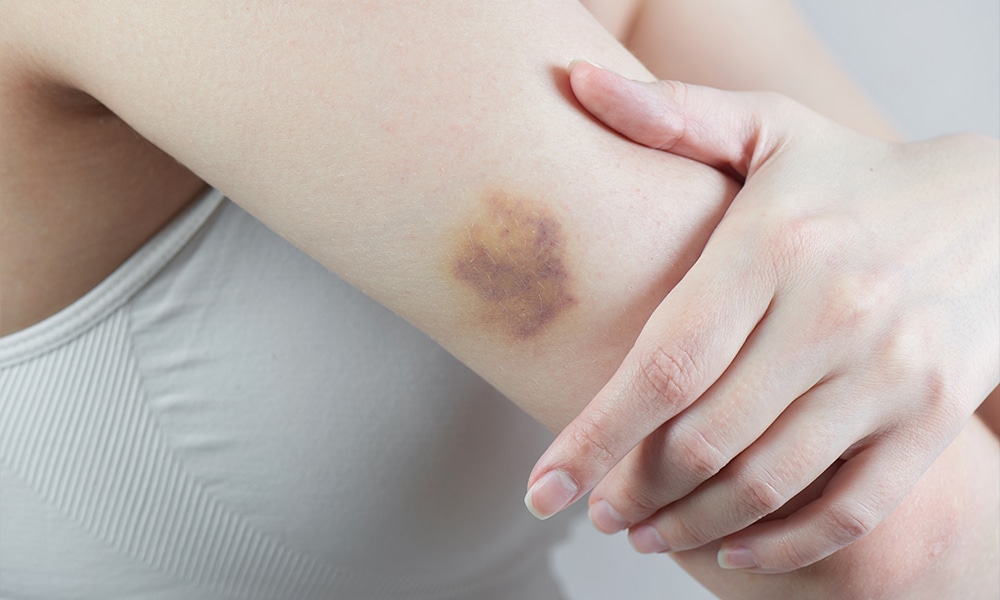
Treating Bruises
There are numerous steps you can take to treat your bruises when you initially get them, and you can even accelerate their healing with some tried and tested home remedies. These simple steps and remedies can help manage the discomfort, reduce the visibility of the bruise, and speed up the healing process. So, without further ado, let’s dive into the details.
First Aid for Bruises
Alright, you’ve just rolled off the mats and discovered a not-so-lovely new bruise blooming. What’s the next step? Well, follow the classic R.I.C.E treatment: Rest, Ice, Compression, and Elevation.
- Rest: Give yourself a break! Your body needs time to start the healing process, so avoid any activities that could cause further injury.
- Ice: Wrap an ice pack in a cloth or towel and place it on the bruised area for about 15-20 minutes. This helps to reduce swelling and numbs the sore area.
- Compression: Wrap the area with a bandage. It’ll help to curb the swelling, but remember not to wrap it too tight — we don’t want to cut off blood circulation.
- Elevation: Try to elevate the bruised area above heart level. You’re essentially helping your body to minimise swelling by encouraging blood flow away from the affected area.
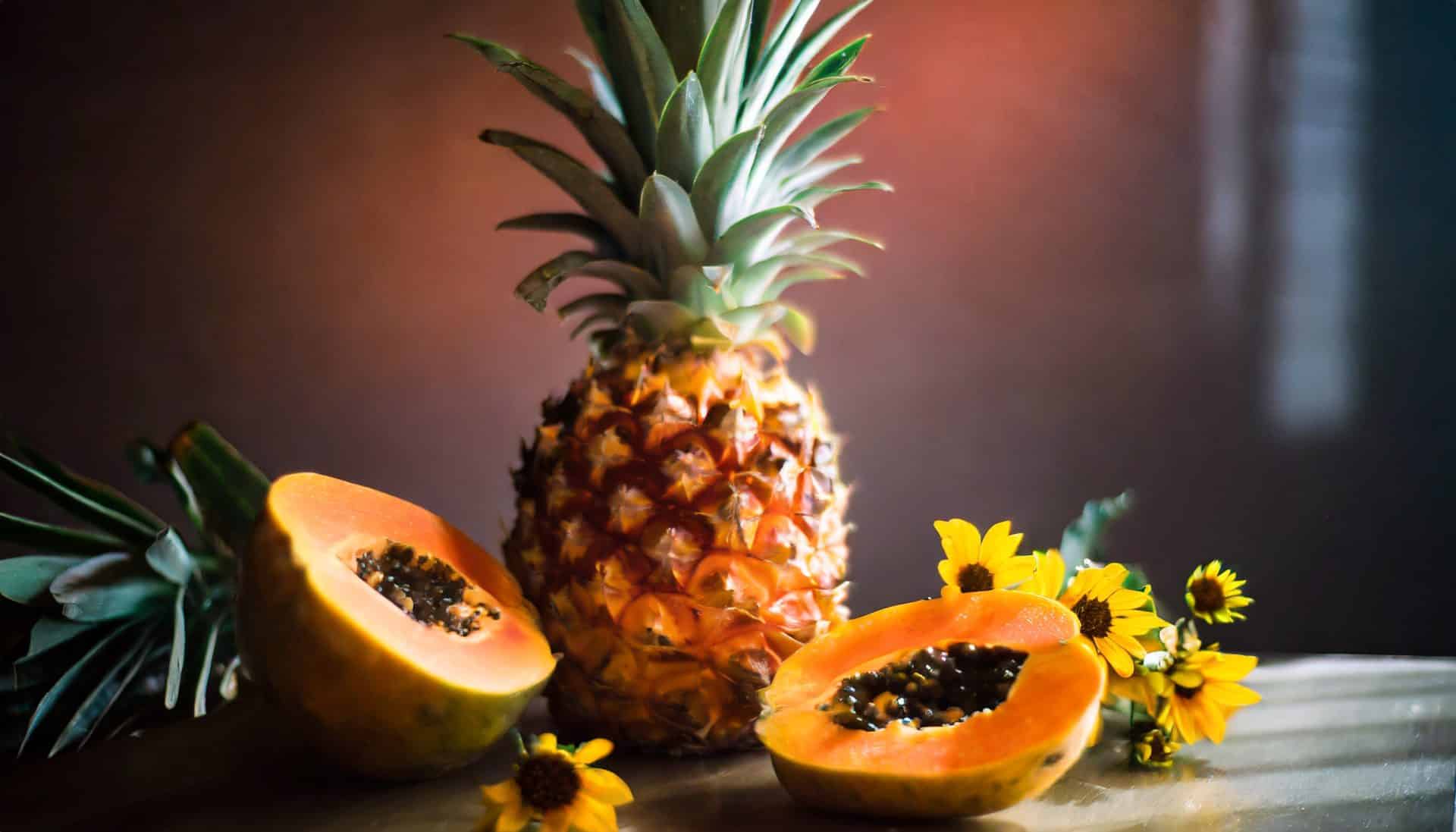
Home Remedies to Speed up Healing
Now sparkling and back at your abode, what can you do to hasten the bruise healing process further? Just check our handy-dandy home remedies:
- Vitamin C & K: These vitamins are champions in healing skin. Vitamin C aids the production of collagen, which helps with skin repair, whilst Vitamin K improves the body’s ability to clot blood, thereby reducing continued bruising.
- Pineapple & Papaya: These fruits contain enzymes (bromelain and papain, respectively) that help to break down blood clots and, thus, facilitate the healing of bruises.
- Arnica: This is a homeopathic topical cream, often used to reduce inflammation, relieve pain, and speed up the healing process.
Remember, these home remedies are not one-size-fits-all solutions. So, pay attention to your body. If you notice any unusual symptoms or the bruise does not start fading after a couple of days, consider seeking medical attention.
Arnica or Voltaren?
That’s the million-dollar question. Arnica or Voltaren? Both are popular choices for treating bruises, but which stands out?
Arnica, a plant native to high-altitude regions in Europe and North America, has been used for centuries for its medicinal properties. And let’s be honest, folks — anything that’s stood the test of time deserves our attention. It’s used in creams and gels that you apply directly to your skin to help reduce swelling and speed up the healing of bruises.
Voltaren, on the other hand, is a brand name for a popular non-steroidal anti-inflammatory drug (NSAID), diclofenac. It’s employed worldwide — from the field to the mat, from sprains to strains.
So, who’s the champion in this showdown?
Unfortunately, or fortunately, depending on how you look at it, there’s no clear-cut winner here. What works best will depend on each individual, their body’s response, and the severity and type of the bruise.
Regardless of your champion cream or gel, consistency. It matters less what you choose to use and more that you consistently apply it. After all, your bruise isn’t going away after one application, so why should your treatment?
Ultimately, an established routine of care and attention will make a difference. Consistency in action — even in bruise treatment — can yield significant results.
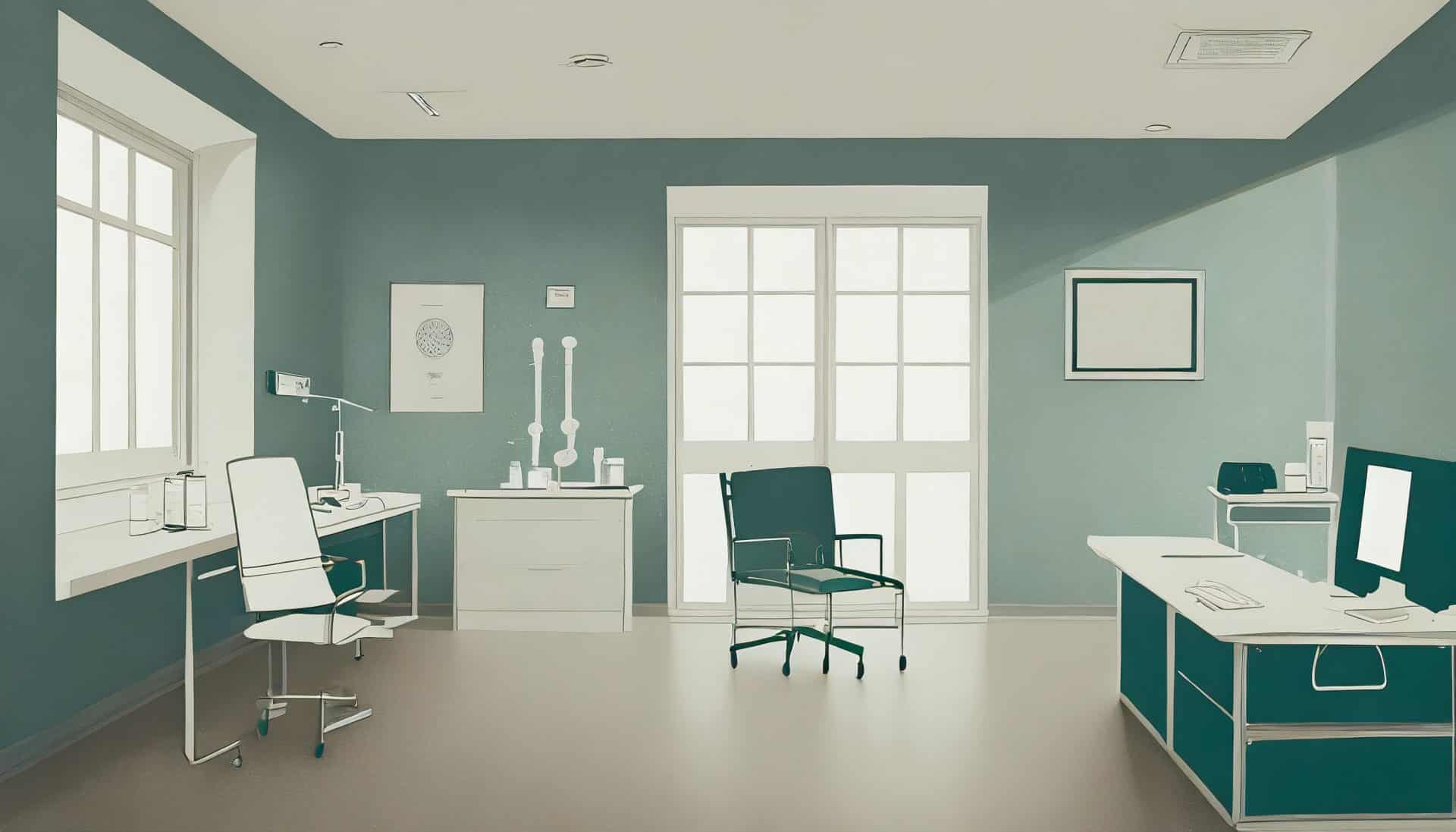
When to Seek Medical Attention
When engaging in combat sports like Brazilian Jiu Jitsu, it’s vital to understand when a bruise is just a bruise—and when it’s a cry for medical attention. Sure, we all love a good war story to share, but ignoring severe symptoms could lead to serious health issues. – Remember, we’re warriors, not doctors!
So, when should you seek medical attention? Let’s lay it out:
- Size: If the bruise is large or rapidly increases, it’s a good idea to check it.
- Location: Have you taken a hit to the head, neck, or eyes? Even a ‘minor’ injury to these areas can be severe. Don’t fob it off.
- Pain: All bruises can hurt, sure! But if the pain doesn’t subside or worsen, that’s not a great sign.
- Swelling: A slight swelling can be normal. But uncontrolled swelling? It’s time to see a doctor.
- Other symptoms: Feeling dizzy, faint, or nauseous? Are you experiencing vision trouble or difficulty moving a joint? Yep, you’re probably not surprised – see a healthcare professional.
How to Spot Potentially Dangerous Impacts
Let’s face it – Brazilian Jiu Jitsu is an intense sport. You’re going to take some hits. And while the occasional bruise or minor injury is par for the course, other impacts need attention. – So, how do you tell the difference?
Pay special attention to:
- Blows to the head: This can cause everything from minor concussions to severe brain injuries, so it’s never something to shrug off.
- Hard stomach impacts: These can cause internal damage, especially to your spleen or liver.
- Direct hits to joints: It can cause potential dislocation or injury to ligaments and tendons.
Remember, the goal here isn’t to alarm you – it’s to arm you with knowledge. Combat sports are physical and intense, and understanding the risks can keep you safe and healthy. – Because isn’t that what a true warrior wants?
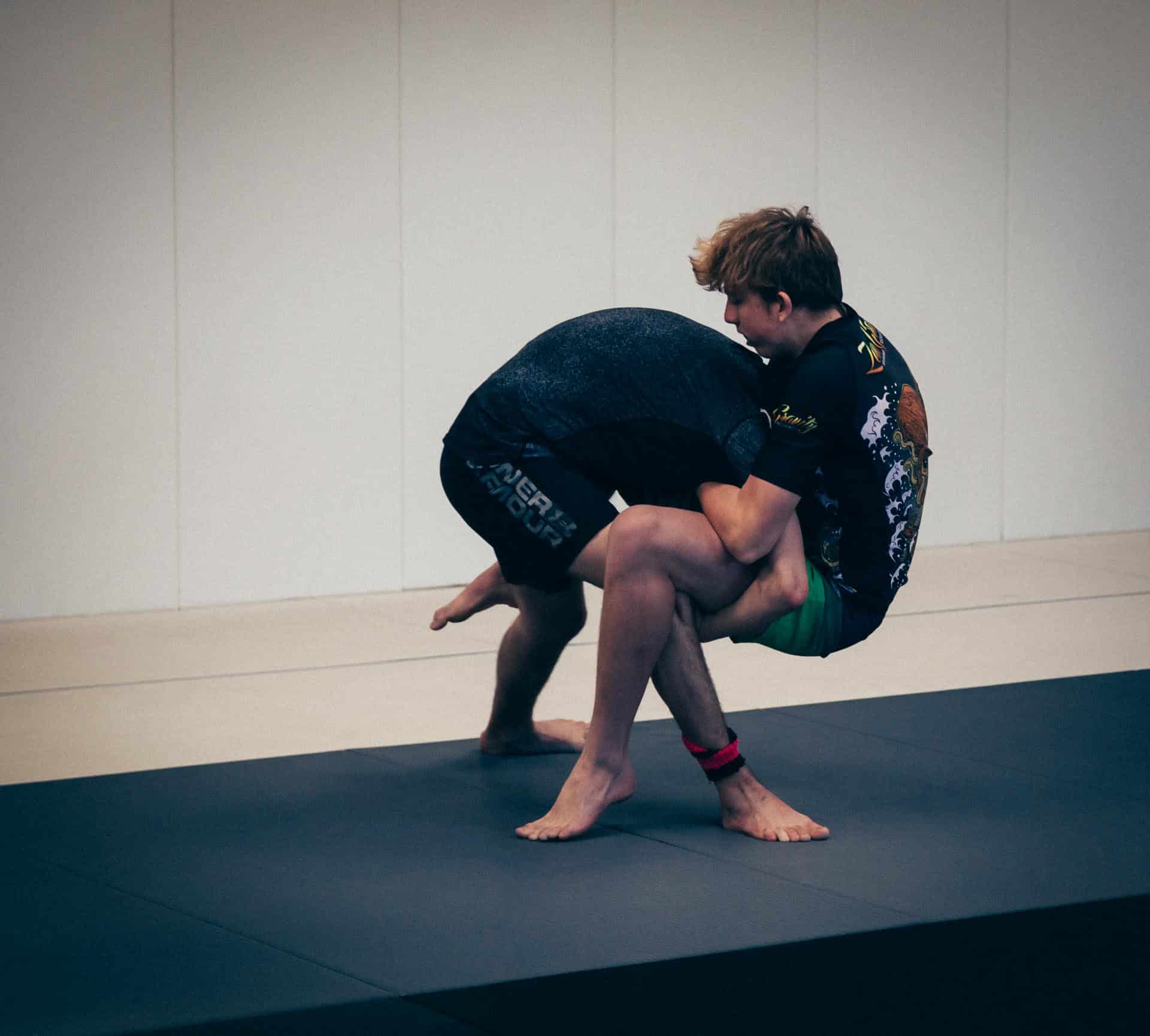
Long-Term Effects
Admittedly, being a regular in Brazilian Jiu Jitsu classes can often translate into sporting a colourful array of bruises. All that grappling and rolling can lead to interesting discolourations – trust me, I’ve been there. But what does this mean for you in the long term?
The Elephant in the Room: Chronic Bruising Isn’t So Charming
Repeated bruising, especially in an intense sport like BJJ, might raise eyebrows. The main concern with bruising isn’t so much the eye-catching colours or even the occasional wince when someone gives you an enthusiastic pat on the back. Instead, it’s what this repeat injury might be doing to your body beneath the surface. Over time, the small blood vessels, or capillaries, beneath your skin can weaken due to regular damage. This could potentially lead to prolonged healing times and – if not given enough time to heal – an increased risk of more severe injuries.
Impact on Blood Flow and Nutrient Supply
Consider this – regular bruising or capillary damage can disrupt blood flow to that area. Remember, your blood is vital in supplying nutrients and oxygen to your body’s cells and removing waste products. So, when blood vessels are damaged, this essential service can be hindered, impacting your healing and recovery process.
Is it all Doom and Gloom?
Not at all! While it’s crucial to take precautions and care for your body, the risks don’t make our beloved BJJ any less appealing. The key is to give your body the necessary time to heal, remain mindful of your body’s signals, and, by all means, please don’t ignore persistent bruises or swelling. And remember, regular check-ups with a medical professional or a sports therapist won’t hurt either – well, not as much as a BJJ chokehold anyway!

Empowering Yourself with Knowledge and Care
Knowledge is power, as they say. Put simply, now that you know the ins and outs of bruises, you’re in a better position to prevent—and react to—them.
To recap:
- Bruises are a common consequence of contact sports like Brazilian Jiu Jitsu— they’re essentially injuries to your blood vessels.
- Diet and age can play a substantial role in how quickly you bruise and heal. Keeping a healthy lifestyle with a balanced intake of essential vitamins and nutrients is crucial.
- Your body’s reaction to bruising changes as you age. Those who are ‘more experienced’ might find that we bruise more easily and heal slower. Fortunately, staying active and healthy can help manage this process.
- Treating bruises can be effectively done at home with first aid and some handy remedies. Yet, knowing when things might be a bit more severe and seeking medical help becomes necessary.
- Finally, continuous bruising can lead to long-term effects — from nutrient supply disruption to tissue scarring. Yet, don’t let this scare you off the mat! As long as you take care of your body, your Brazilian Jiu Jitsu journey shouldn’t be hindered by these minor setbacks.
But now comes the most significant bit—how you use this information. Implementing the right dietary changes, preventing bruises, and knowing how to react when they happen are all vital for your health and your sport.
So, remember: cool down, elevate, compress, repeat!
Lastly, I can’t stress this enough: listen to your body. It’s often more adept at informing you about an issue than any doctor! Listen to its whispers so you don’t have to hear its screams. Let’s strike that perfect balance on the mat—between power and caution, knowledge and application. After all, isn’t that what Brazilian Jiu Jitsu is all about?



